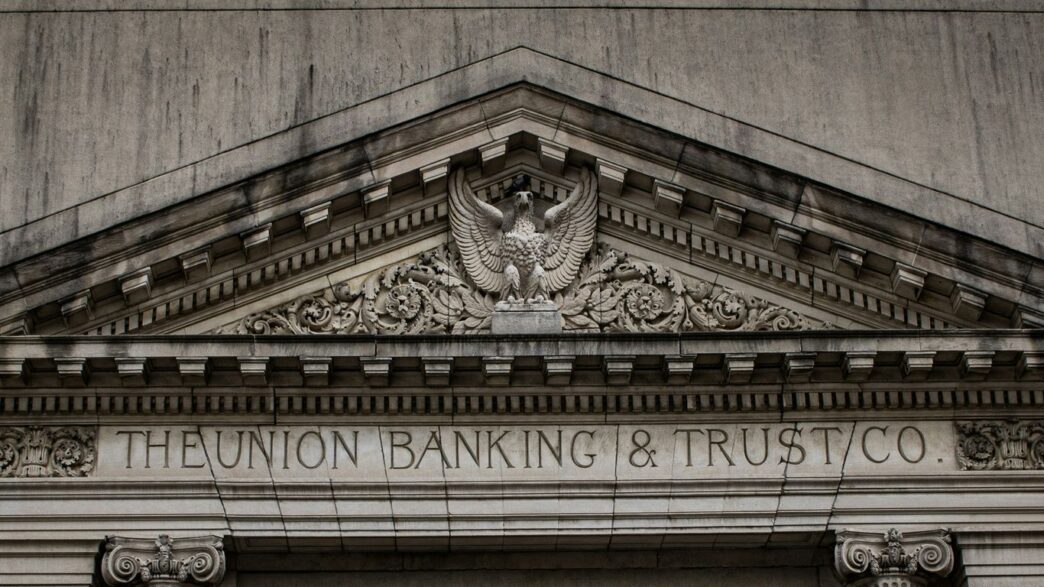Trust is everything in financial services PR. If people don’t feel confident in a bank or fintech, they’ll take their business elsewhere. These days, with so much happening online, it’s even harder to win and keep that trust. Companies have to be open about what they’re doing, keep communication simple, and protect customer data at all costs. It’s not just about having flashy tech or a slick app—what matters most is showing people that their money and information are safe, and that they’re being listened to. Let’s look at some practical ways financial services PR teams can build real trust in this digital world.
Key Takeaways
- Open and honest communication helps build trust with customers, especially when digital services are involved.
- Personalized experiences, powered by smart use of data and AI, can make customers feel valued but must respect privacy limits.
- Strong cybersecurity and privacy measures aren’t just technical needs—they’re key to keeping customer confidence.
- Meeting legal and ethical standards in PR is a must, not just a box to check. Customers notice when brands act responsibly.
- A simple, easy-to-use digital experience, along with quick customer support, can make all the difference in building loyalty.
Prioritizing Trust in Financial Services PR
Understanding the Digital Trust Gap
Increasingly, people expect banks and fintechs to protect their money, their data, and their peace of mind. However, the shift to digital brings new worries—data leaks, unclear product information, and faceless online interfaces can leave customers feeling exposed. Trust in digital financial products is shaped by how well institutions protect both money and information. In fact, while nearly 70% of people say their banks act in their best interest, that confidence isn’t equally shared across ages or genders. Tech-forward competitors like fintechs are gaining on traditional banks by using transparency, technology, and customer-focused design to win over digital natives.
- Data protection and privacy are the #1 trust factors for consumers.
- Women and younger adults report lower trust in banks than men and older customers.
- Fintechs are viewed as highly trustworthy among tech-savvy groups, with 37% of surveyed users naming a fintech as their most-trusted provider.
| Institution Type | % Consumers Reporting Top Trust |
|---|---|
| Traditional Banks | 33% |
| Fintech Companies | 37% |
| Insurance/Investment | Less than 33% |
Trust in digital finance isn’t automatic—companies have to earn it every day, and every mistake can cost them business.
Lessons from Recent Industry Challenges
Banks and financial firms have faced plenty of public setbacks over the past couple of decades—think big scandals, data breaches, or rapid leadership turnovers. Each incident chips away at public confidence, and it takes a lot more effort to rebuild trust than to lose it. For example, even today, about 38% of US adults say they have little or no faith in the overall financial system, especially after seeing repeated headlines on data security failures and confusing business practices.
What the industry learned:
- Quick, transparent communication is critical during a crisis—or customers will fill the silence with their own fears.
- Restoring trust means following through with clear action, not just PR statements.
- Ethical behavior, open data-use policies, and showing responsibility matter more to today’s skeptical customers than flashy marketing.
The Role of Reputation in Customer Decision-Making
People rely on reputation when picking where to save, invest, or even just open a checking account. With all the options out there, one bad review or a hint of a scandal can drive customers elsewhere. PR teams should see reputation as a living asset—not a static badge.
Key factors driving consumer choice:
- Brand history and consistency
- Innovation balanced with reliability
- Transparency around business practices (for example, how data is managed)
- Clear, proactive customer support
- Visible alignment between marketing promises and day-to-day actions
Reputation isn’t just about being well-liked; it directly impacts whether customers stay or leave. For deeper insight into these trends and their implications for financial brands, check out global fintech industry perspectives, where new PR strategies are shaping the way firms build confidence in a changing landscape.
Leveraging Transparency and Communication to Foster Confidence
Financial services have always been about trust, but the digital age demands a totally new playbook. People want to know, with zero doubt, that their bank or fintech app is playing it straight – that’s where open, clear communication and radical transparency come in.
Developing Clear Communication Strategies
Open, plain-spoken communication is one of the fastest ways to win over hesitant customers. You can say you’re secure or that you care, but if you’re not walking them through what that means, customers will bail for someone who will. Some things that work well:
- Use simple language in all customer updates
- Provide regular, honest progress reports on new features and service outages
- Share stories about community involvement or improvements, not just numbers
| Approach | Customer Trust Impact |
|---|---|
| Regular email updates | High |
| Technical jargon in reports | Low |
| Community-focused campaigns | High |
It’s a lot easier for people to trust a company that talks to them like actual humans, not legal robots.
Aligning Messaging with Brand Actions
Saying one thing and doing another is a quick way to lose customers. Alignment between your communication and what your company actually does isn’t just PR fluff – it matters. Here’s what helps:
- Double-check that product claims actually match real features
- Get feedback from actual users, not just executives, about the company’s values in action
- Pause campaigns or fix problems quickly if the business falls short
Nothing erodes goodwill like getting an email about "best-in-class support" after a two-hour support line hold.
Utilizing Thought Leadership to Demonstrate Value
Thought leadership isn’t just about shouting your opinions online. In finance PR, it means sharing real expertise and being helpful without always selling. Here’s how firms get it right:
- Publish clear explainers on financial trends or cyber safety
- Have execs give interviews or comment in big industry publications
- Share behind-the-scenes decision-making or lessons learned from hard situations
When leaders explain how they address tough issues or support smarter consumer choices, it makes the brand feel reliable and approachable.
Being transparent isn’t just a tactic – it’s a daily commitment. If you’re upfront and consistent, people notice, and that’s what builds long-term confidence.
Personalization as a Driver of Consumer Loyalty
The financial services world has changed fast. People don’t just want generic advice or cookie-cutter products anymore. They want to see that their bank (or fintech app) knows them, gets them, and is working to help them reach their goals. This isn’t just about marketing—it’s about earning the kind of loyalty that keeps someone around, even when competitors offer shiny new deals. Personalization creates stickiness, building real relationships between companies and customers.
Harnessing AI and Data Analytics for Personalization
AI and powerful data tools allow companies to know customers far better than before. But it can feel a little weird if it’s too much. Here’s what works:
- Use AI to spot spending patterns, then share tips or products that fit real needs—not just push random offers.
- Give customers personalized alerts or reminders (like a nudge to save more when bills are higher than normal).
- Tailor digital dashboards so people see what’s most important to them.
A quick look at how consumers feel about AI in banking:
| Personalization Preference | Privacy Concern | Want Human Options |
|---|---|---|
| 64% | 53% | 51% |
Get the balance right: show how tech makes things easier, but make sure people see you’re not using data in creepy ways. Transparency and consent are key.
Tailoring Experiences to Diverse Demographics
It’s not just “one size fits all.” Different people need different things:
- Older customers may want clear security info and human help for anything complex.
- Younger users might care more about instant alerts, app features, and flexible accounts.
- Some folks (regardless of age) prefer apps in different languages, larger text, or varied communication styles—from text messages to video calls.
Financial brands need to:
- Offer self-service tools for digital natives.
- Keep live support handy for anyone preferring it.
- Make sure platforms feel welcoming to all—no matter language, ability, or background.
Balancing Customization with Privacy Concerns
Banks and fintechs walk a tightrope here. The more personal the experience, the more people worry about how their data is used. If it feels invasive, trust drops fast.
Ways to keep things comfortable:
- Be upfront about what data gets collected, and why.
- Let users opt in or out of different forms of personalization.
- Protect privacy by only storing what’s necessary, and making it easy to delete or manage data.
If banks get this balance right, they win long-term loyalty. People will keep coming back—not because they have to, but because it feels like their money is in good hands, with a company that actually knows (and respects) them.
Implementing Cutting-Edge Cybersecurity and Privacy Protections

Protecting customers’ financial data is absolutely central to digital banking and fintech today. One high-profile data breach can destroy trust and erase years of brand-building. As a result, financial companies aren’t just maintaining old systems—they’re constantly adapting, updating, and explaining new security approaches to reassure everyone who banks online.
Adopting Advanced Cyber Defense Technologies
Modern financial institutions rely on much more than passwords and basic encryption nowadays.
- Behavioral biometrics: Recognizes users by the way they type or move the mouse, adding a unique security layer.
- AI-powered threat detection: Spots unusual transactions and account behavior in real time, alerting companies to possible fraud long before there’s a big problem.
- Zero-trust architecture: Instead of assuming anyone inside the network is safe, every attempt to access sensitive data is verified from scratch.
- Predictive analytics: Helps forecast where the next attack might come from—allowing companies to block risks early.
Here’s a quick look at which tools are most common:
| Security Measure | Adoption Rate (%) |
|---|---|
| Multi-factor authentication | 91 |
| AI threat detection | 68 |
| Behavioral biometrics | 43 |
| Zero-trust frameworks | 31 |
Even with all these defenses, hackers are relentless—so companies can’t ever feel they’ve "finished" keeping data safe.
Educating Stakeholders on Data Protection
Security tools only matter if people understand how and why they work. Both customers and internal teams need ongoing education so they know what to look out for, and what to do when something seems off.
Three practical ways banks and fintechs educate stakeholders:
- Clear, simple guides for customers explaining secure logins, spotting phishing, and safe mobile banking.
- Training sessions for employees—especially on new attack tactics and company protocols.
- Digital outreach informing stakeholders about new protections, so users trust the process and feel included in updates.
Responding to Data Breaches and Security Incidents
Even the best-prepared banks experience problems. It’s all about how the company responds when things do go wrong.
Some key steps to keep in mind:
- Immediate communication to affected users, being honest about what happened and how they can protect themselves.
- Public commitment to next steps—like rolling out extra monitoring or credit protection.
- Reviewing what failed and updating procedures fast, so repeat incidents don’t happen.
Quick, honest updates—rather than hiding the truth—are what really earn customer respect after a breach.
The stakes are obvious. The more that banks show they’re investing in smart defenses and keeping customers in the loop, the more likely people are to stick around—even when threats change or evolve overnight.
Meeting Regulatory and Ethical Expectations in PR Campaigns
Keeping up with laws and earning trust is sometimes an uphill battle for financial companies. People want to know their bank follows the law and acts responsibly, but the rules seem to change faster each year. Companies that show real commitment to regulatory and ethical standards become safer bets for customers.
Navigating Global Compliance Complexities
The landscape gets complicated fast when a company moves into new countries. Each place has its own rules about data, privacy, and business operations. For example, tech firms often face changing rules and fines when they don’t keep up (legal compliance challenges).
Some ways businesses handle this:
- Map out legal requirements in every country where they operate
- Set up internal teams to monitor new regulations
- Communicate major compliance milestones to investors and users
| Country | Data Privacy Law | Key Requirement |
|---|---|---|
| USA | CCPA | Data access rights |
| EU | GDPR | User consent required |
| Singapore | PDPA | Breach notifications |
It’s not just about following the law, but also explaining to customers how these protections help keep their money and data safe.
Promoting Ethical Banking and Fintech Initiatives
Financial services aren’t just about making money. Customers expect companies to explain where their values stand. From fair lending to responsible tech, brands can win people over by being honest about how they treat customers and communities.
How to make ethics a real part of PR:
- Share examples of responsible products or initiatives
- Show results (for example, reduced bias in lending)
- Respond publicly when policies change
Communicating ESG Impact Authentically
Environmental, social, and governance (ESG) goals have become important in finance. It’s not enough to talk about these—you have to back it up. Customers and partners want to see real effort, not just big promises.
Some tips:
- Publish clear, easy-to-read sustainability reports
- Explain the direct benefits for communities and the environment
- Highlight partnerships with agencies or other groups working in ESG
If companies keep their messages true and their updates regular, people notice. Fakes get called out quickly, but real progress builds long-term trust.
Staying transparent about compliance, ethics, and impact is not always simple, but it’s become a must in today’s world.
User Experience as a Cornerstone of Digital Trust
A digital banking platform can do a lot, but if it’s hard to use, people will start looking elsewhere. Clear, logical design helps customers feel comfortable managing their money online. Simple navigation, readable text, and easy access to common tasks (like checking balances or paying bills) make all the difference. When banks and fintechs roll out new features, it’s worth testing them with real users first, not just tech teams. Here’s what makes a digital platform truly user-friendly:
- Logical menu placement with straightforward language
- Consistent layouts across devices (desktop, mobile, tablet)
- Quick pathways for common transactions
- Contextual help or tooltips for new features
If a banking app feels confusing or cluttered, customers probably won’t call customer service—they’ll just look for another app that works better.
Addressing Accessibility and Usability Barriers
Not everyone interacts with financial services the same way. Good digital design includes features for people with limited vision, hearing, or dexterity, and those less confident with smartphones. Accessibility means options, like larger type, text-to-speech, and keyboard navigation—not just for compliance, but because it’s the right thing to do. Tackling usability issues also means finding problems early. Banks can:
- Review interfaces for compatibility with screen readers
- Offer multiple language choices
- Allow font and contrast adjustments
A lot of older customers (and some younger ones too) feel left behind by complicated tech. Real progress is when digital banking is welcoming for everyone.
Providing Responsive Customer Support Across Channels
No matter how much time goes into app design, people will always have questions or run into snags. Fast, friendly support isn’t just a perk anymore—it’s expected. Responsive support teams should be reachable by phone, chat, email, and even social media. Some fintechs have set the bar high with 24/7 help lines, instant chatbots, and detailed FAQ libraries.
Here’s a quick comparison of customer support response times (averages) for different channels:
| Support Channel | Expected Response Time |
|---|---|
| Phone | Under 2 minutes |
| Live Chat | Under 3 minutes |
| Within 24 hours | |
| Social Media | Within 1 hour |
With fintech competition growing, and major players stepping into the market with digital offerings, banks with slow or rigid support simply risk falling behind. Fast, clear answers help reassure customers and keep frustration levels low—even in stressful situations.
Innovative Approaches to Crisis Communication in Financial Services

Communicating during a financial crisis isn’t just about putting out a statement—it’s about keeping cool, being upfront, and acting fast. The way a company responds in those tense moments can either build trust or chip away at it for years. In financial services, where there’s a lot at stake, smart crisis communication plans can truly set you apart from the rest.
Preparing for High-Stakes Incidents
Nobody wants to think about a crisis, but planning ahead is key. Most firms are now:
- Assembling cross-functional crisis teams with comms, legal, tech, and execs.
- Holding regular crisis simulations and tabletop exercises.
- Building clear protocols outlining who approves messaging and who talks to the public.
These steps make it easier to act quickly when something actually happens.
| Preparation Task | How Often? |
|---|---|
| Crisis Simulations | 2x per year |
| Protocol Review | Quarterly |
| Stakeholder Contact Updates | Monthly |
Quick, clear decisions and updated lists make the whole process less chaotic when real trouble hits.
Building Multi-Channel Crisis Response Plans
In a digital world, relying on a single channel just doesn’t cut it. Companies are:
- Setting up notification systems that reach customers, investors, and regulators at once.
- Preparing templated emails, SMS updates, app alerts, and social media posts.
- Making sure websites and apps can handle a surge in traffic for updates or support.
You can’t assume customers will check one channel, so coverage needs to be broad.
Maintaining Stakeholder Confidence During Uncertainty
Once a crisis starts, trust hinges on what you say next. This means:
- Being transparent about what happened and what you’re doing next.
- Offering regular, bite-sized updates even if there’s little new info.
- Admitting mistakes and laying out what will change so it doesn’t happen again.
- Providing direct support resources and clear next steps for affected users.
The companies that come out stronger are the ones who keep the conversation going, not just until the dust settles, but long after.
After the initial incident, focus on rebuilding by sharing details on improvements and new safeguards going forward. That’s what keeps people willing to stick with your brand, even when things have gone sideways.
Conclusion
Building trust in financial services isn’t something you can check off a list and forget about. It’s an ongoing job, especially now that so much of banking and investing happens online. People want to know their money and data are safe, and they want to feel like their bank or fintech actually cares about them—not just their account balance. That means being upfront about how things work, fixing problems fast, and making sure communication is clear and personal. It also means taking security seriously and following the rules, not just because you have to, but because it shows you respect your customers. The companies that get this right—by listening to feedback, using tech to make things easier, and being honest when things go wrong—are the ones that will keep people’s trust for the long haul. In the end, trust is what keeps customers coming back, no matter how fancy the technology gets.
Frequently Asked Questions
Why is trust so important in financial services today?
Trust is the foundation of financial services because people rely on banks and fintech companies to keep their money safe and handle their personal information. If customers don’t trust a company, they are unlikely to use its services or recommend it to others.
How can financial institutions build trust with customers online?
Financial institutions can build trust online by being open and honest in their communication, making sure their digital platforms are easy to use, and protecting customer data with strong security measures. They should also listen to customer feedback and quickly fix any problems that come up.
What role does personalization play in earning customer loyalty?
Personalization helps customers feel valued and understood. By using technology like AI and data analytics, banks and fintechs can offer services that fit each person’s needs. This makes customers more likely to stick with a company that shows it cares about them as individuals.
How do companies protect customer information in the digital age?
Companies use advanced cybersecurity tools like encryption, two-factor authentication, and real-time threat detection to keep customer data safe. They also teach their staff and customers about safe online habits and have plans ready in case a data breach happens.
Why is clear communication important in financial services PR?
Clear communication helps customers understand what a company is doing to protect them and how its products work. When companies explain things simply and honestly, it builds confidence and reduces confusion or fear, especially during uncertain times.
What does it mean for a financial company to act ethically?
Acting ethically means a company follows the rules, treats people fairly, and cares about its impact on society and the environment. Ethical companies are honest about their actions, avoid making false promises, and work hard to earn and keep the trust of their customers.














